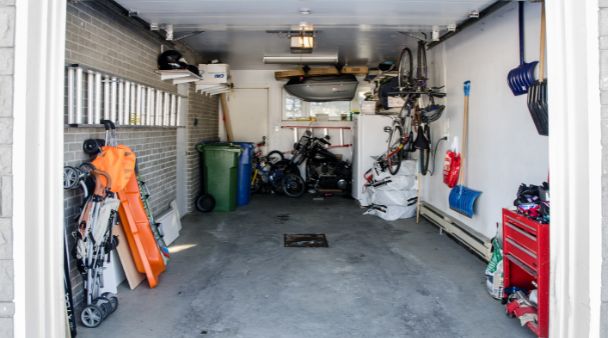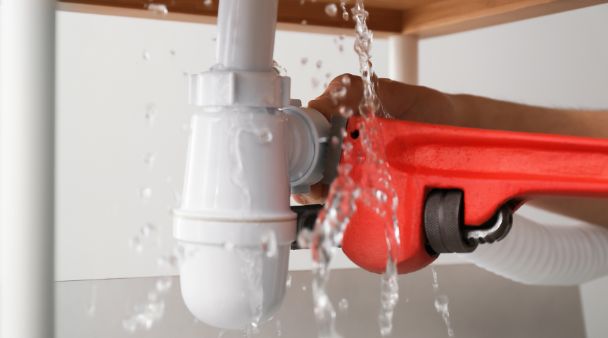Mold In Garage: What To Know As A Florida Homeowner
During the rainy season, mold growth can multiply and become an annoying issue. Fortunately, there are steps you can take to prevent it. In Florida, people have become accustomed to managing the home issues brought by the rainy period. However, there may be areas that are left ignored unintentionally.
The garage isn’t often thought about, but it’s always a high-risk area for flooding during heavy downpours. Designed to accommodate vehicles, the entryway of the garage can let in a vast amount of water, leading to significant property damage. This potential flooding in the garage can be a major concern for homeowners.
Florida’s homes are usually designed with a two-car attached garage. This garage presents more danger when it comes to water damage. With damage caused by water, one can expect the possibility of mold spores. With a strong flow of water in your garage, mold spores growth is often at its heels.
What should homeowners do to protect both the vehicles and garage and prevent mold growth? This article will reveal the best ways to prevent mold spores from occupying your garage during the rainy times.
Here Are Tips To Prevent Mold In Your Property:
1. Seal The Garage Door Properly
Tight sealing of the garage door is a requirement to ensure that water won’t pass through it. You can secure your garage by buying a weather barrier strip or flood barrier strip that can enhance protection. You can also look into using mildew resistant paint for your garage door.

The barriers are designed to address the weak points of the garage like the garage doors and garage walls. They’re easy to set up and will save you money from the potential repair of water damage. Prevention is a better option than facing remediation.
2. Do An Inspection And Address Existing Issues
Circle your garage and its surrounding areas thoroughly. Are there spots that can be in danger during flooding? List down the items that require attention such as:
● Gutters - Gutters should be located farther than the garage or be attached with an extension to redirect water away. You can also do a routine cleanup of your gutters since it can affect their optimal function when they’re filled with dirt and leaves. Full gutters also cause water to overflow and pool around the home. Thus, the garage and home property are left vulnerable to water damage.
● Roof - Your property’s roof should be inspected including the garage roof. It should be free from cracks where water can easily leak into your home or garage. Notice if there are any dips and swelling since these indicate damage is happening. Once you find these signs, it’s best to contact a professional mold inspector. The mold inspector is skilled in recognizing and finding mold intrusion. If the leak is simple, you can fix it on your own right away. Doing this reduces the risk to damage.
● Pipes - Another area to check are your pipes. If you see leaky pipes, you can conclude the existence of mold since it’s the top enabler of mold growth. A leaky garage pipe is an ideal environment for mold to flourish. Fixing pipe leaks require proper know-how so you need to get in touch with a good plumber for the job.

3. Control The Humidity
To help avoid mold in your garage, controlling the humidity is a must especially under the Florida climate. You can opt to change the thermostat setting or open your windows for natural air and light to flow through.
If you live near the ocean though, the humidity can still affect the property. You can open your garage door for an hour to limit the stuffy air inside. Still, open doors can be risky when the rains come.
Another solution is to get a dehumidifier in your garage to lower the humidity level. You can opt for a tankless dehumidifier since it requires no maintenance. It helps in moisture collection.
Normally, dehumidifiers with tanks require you to empty the tank every time it’s full. This means perpetually checking on it and emptying it repeatedly.
A tankless dehumidifier is designed with a hose that replaces the tank. You can place the tube on the machine and connect the other end to a floor drain, which your garage floor may have, as garage drains are very common. When condensation forms as a result of humidity in the air, the water is directly drained away, keeping your floor dry and preventing moisture buildup on the garage floor.

This lets you skip the emptying process that’s necessary in a dehumidifier with tank. Thus, it takes little effort to maintain the humidity control in your garage space.
4. Minimize Landscaping And Relocate Plants
As a homeowner, you naturally aim for an attractive curb appeal and maintain it frequently. However, setting up plants should be strategic. The more plants there are around your home, the more vulnerable your property becomes. Even your foundation can be affected with plant roots.
Big trees with deep roots often seek for more moisture and will even reach beneath the home creating a lot of damage. The plant roots can reach into the pipes. Even the garage structure can be compromised.
Cracks and leaks can happen with the roots’ invasion. This makes the foundation weaker and susceptible to water damage during flooding. Once again, mold can become another worrying issue. It’s always best to prevent the development of mold in your garage. Remediation takes time and money to fix.
Bottom Line
If you want to be aware of mold growth in your Florida home or you suspect the presence of mold, reach out to Markham Services. You can call us at (407) 913 6363 or email us at info@markhamservices.com. We specialize in mold testing and mold inspection in Central Florida.
As a mold removal services company focused on mold prevention and mold detection, we offer our two decades of mold experience and mold expertise to help you especially in the rainy season. We’re thorough in mold inspection and testing to provide a safe environment for homeowners.
Inspections are supervised and performed by a trained Certified Mold Inspector and Certified Indoor Environmentalist fully committed in adhering to the highest standards when it comes to practicing environmental inspection as professionals.


